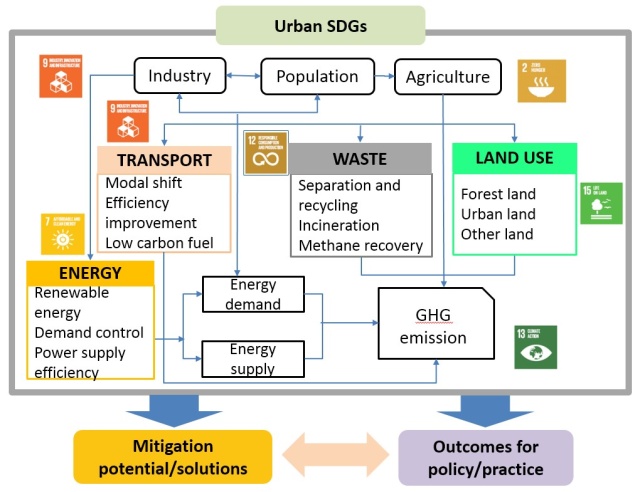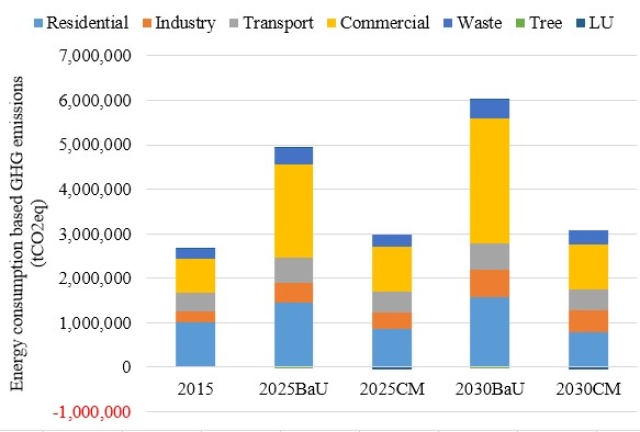論文情報
Low carbon development and co-planning mitigation actions to achieve the SDGs targets-a case of Bogor
著者: Sun L., Gomi K., Fujita T., Fujii M., Maki S., Gito I., Rizaldi B
年:2020
掲載誌:第48回環境システム研究論文発表会
キーワード
Low carbon city; Energy sector; Transportation sector; Waste sector; SDGs
要旨
Cities and human settlements will be the keys to achieving global Sustainable Development Goals (SDGs). All cities aim to increase prosperity, enhance resilience and environmental sustainability, especially in devel-oping countries. While how to promote the low carbon city transition and achieve the SDGs targets are the emerging challenges. Few researchers have considered the coupling effect of comprehensive countermeasures to achieve the SDGs targets and the interactive process of actions and scenarios design. To fill in the research gaps, this study (1) Develop an integrated ExSS model, to analyze and predicate the different countermeasures of different sectors' contributions to the low carbon development. (2) Identify challenges and problems in the city development based on the field survey and dialogues with local stakeholders. (3) Evaluate SDGs future city development scenarios and mitigation actions with considering cross-industrial sectors. Bogor city is selected as a case, then applied the integrated model to conduct a systematic analysis. The results showed that, the energy efficiency improvement in the commercial and residential buildings are the main contributors to emis-sion reduction of the 2030CM scenario. The emission reduction amounts by the mitigation actions accounts for 38.1% and 18.2% of the total emission reduction amount, respectively. The energy supply sector, transport sector, and the waste management sector also make significant contributions, the emission reduction amount accounts for 23.5%, 4.1%, and 3.9% of the total emission reduction amount of 2030CM scenario, respectively.
The results and countermeasures are introduced as a basis for the need to actively solve the challenges in the city, highlighting the effective ways of achieving four key SDGs. This study not only helps the local govern-ment shift to more environmentally sustainable and economically successful development pathways but also provides inspiration for comprehensive climate change mitigation solutions from the co-planning perspective.






